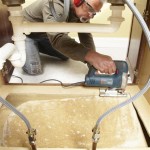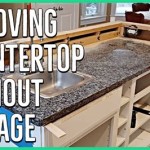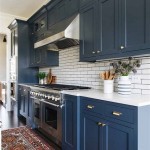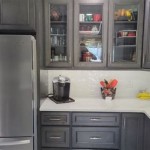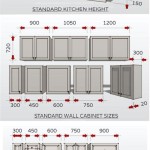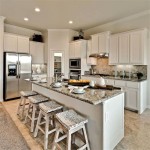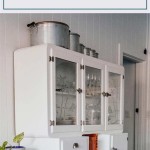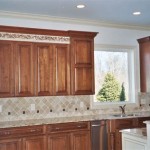Oak Cappuccino Kitchen Cabinets: A Comprehensive Guide
Oak cappuccino kitchen cabinets represent a popular choice for homeowners seeking a blend of traditional warmth and contemporary sophistication. The combination of oak wood's natural grain and the rich, creamy hue of cappuccino paint or stain offers a versatile aesthetic suitable for a wide range of kitchen styles. This article provides a detailed overview of oak cappuccino kitchen cabinets, exploring their key features, design considerations, maintenance requirements, and potential cost factors.
Understanding the Appeal of Oak Cappuccino
The enduring popularity of oak cappuccino cabinets can be attributed to several factors. Oak, as a hardwood, is known for its durability and resistance to wear and tear, making it a practical choice for a high-traffic area like the kitchen. Its distinctive grain pattern adds visual interest and a sense of natural beauty. The cappuccino finish, a warm and inviting shade of brown with creamy undertones, complements the oak's natural tones, creating a cohesive and visually appealing aesthetic. This color palette is considered neutral enough to work with a variety of countertop materials, backsplash designs, and flooring options, making it easier to coordinate with existing or planned kitchen décor. Furthermore, the warmth of the cappuccino finish tends to create a welcoming and comfortable atmosphere in the kitchen, enhancing the overall user experience.
The finish also offers a degree of practicality. Lighter than darker wood stains, cappuccino finish tends to hide dust and minor imperfections better than, say, dark espresso cabinets. This can be beneficial for homeowners who desire a low-maintenance aesthetic. The relative neutrality of the color allows it to be easily paired with both warm and cool color palettes, offering considerable design flexibility. Whether you're aiming for a rustic farmhouse, a modern transitional, or a classic traditional kitchen, oak cappuccino cabinets can serve as a versatile foundation for your design scheme.
Beyond aesthetics, the choice of oak as the cabinet material itself contributes to the perceived value. Oak is generally more affordable than some other hardwoods like cherry or walnut, making it an accessible option for homeowners on a budget. Moreover, oak cabinets, when properly constructed, can last for decades, providing a long-term return on investment. The robust nature of oak also lends itself well to various door styles and construction methods, offering homeowners a wide array of choices when selecting their cabinets.
Design Considerations for Oak Cappuccino Kitchens
Designing a kitchen with oak cappuccino cabinets involves careful consideration of various elements, including cabinet styles, countertop choices, backsplash designs, hardware selections, and overall kitchen layout. Successfully integrating these elements can create a harmonious and visually appealing space.
Cabinet Styles: Oak cappuccino cabinets are available in various door styles, ranging from traditional raised-panel designs to modern flat-panel options. Raised-panel doors, such as Shaker or cathedral styles, lend themselves well to more traditional or transitional kitchens. These styles often feature intricate detailing that complements the oak's natural grain. Flat-panel doors, on the other hand, offer a cleaner and more contemporary look. These are ideal for modern or minimalist kitchens where simplicity and functionality are prioritized. Slab doors, which are completely flat, represent the most streamlined option. The choice of door style should align with the homeowner's overall design aesthetic and the desired level of formality in the kitchen.
Countertop Choices: The versatility of oak cappuccino cabinets allows for a wide range of countertop pairings. Granite countertops in light or neutral tones, such as white granite, light gray granite, or beige granite, can create a bright and airy feel. Quartz countertops, known for their durability and low maintenance, also offer numerous color and pattern options. White quartz countertops with subtle veining can mimic the look of marble while providing added stain resistance. For a warmer aesthetic, consider granite or quartz countertops with brown or gold undertones. Wood countertops, such as butcher block, can also complement oak cappuccino cabinets, creating a rustic and inviting atmosphere. However, wood countertops require regular maintenance to prevent water damage and staining.
Backsplash Designs: The backsplash serves as a crucial design element in a kitchen and can significantly impact the overall aesthetic. Subway tile, a classic choice, provides a clean and timeless look. White or cream-colored subway tile can brighten the space and complement the cappuccino finish of the cabinets. Glass tile, available in various colors and sizes, offers a sleek and modern touch. Consider using a neutral color or a complementary shade of brown or beige to coordinate with the cabinets. Mosaic tile, with its intricate patterns and textures, can add visual interest and personality to the backsplash. Natural stone tile, such as travertine or slate, can create a rustic and earthy feel.
Hardware Selections: Cabinet hardware, while seemingly a small detail, can significantly impact the overall look of the kitchen. Brushed nickel or satin nickel hardware offers a contemporary and understated look that complements the warmth of the cappuccino finish. Oil-rubbed bronze hardware can add a touch of rustic charm and complement traditional cabinet styles. Black hardware provides a bold and contrasting element that can enhance the modern appeal of the kitchen. The choice of hardware should be consistent throughout the kitchen and align with the overall design aesthetic. Consider the shape and size of the hardware as well, ensuring that it is both functional and visually appealing.
Kitchen Layout: The kitchen layout should be carefully considered to maximize functionality and efficiency. Common kitchen layouts include the U-shaped, L-shaped, galley, and island layouts. The choice of layout should depend on the size and shape of the kitchen, as well as the homeowner's specific needs and preferences. An island can provide additional counter space, storage, and seating, making it a valuable addition to many kitchens. Proper spacing between cabinets, appliances, and countertops is essential to ensure comfortable movement and workflow. Consider the placement of the sink, stove, and refrigerator to create a functional work triangle. Furthermore, ensure adequate lighting throughout the kitchen, including task lighting for food preparation and ambient lighting for general illumination.
Maintenance and Care of Oak Cappuccino Cabinets
Proper maintenance is essential to preserve the beauty and longevity of oak cappuccino kitchen cabinets. Regular cleaning and preventative measures can help prevent damage and ensure that the cabinets remain in excellent condition for years to come.
Regular Cleaning: The surface of oak cappuccino cabinets should be cleaned regularly with a soft, damp cloth. Avoid using abrasive cleaners or scouring pads, as these can scratch or damage the finish. For stubborn stains or grease buildup, use a mild dish soap diluted in water. Wipe the cabinets dry with a clean cloth to prevent water spots. Pay particular attention to areas around the stove and sink, where splatters and spills are more likely to occur. Regular cleaning can help prevent stains from setting and ensure that the cabinets remain clean and hygienic.
Preventative Measures: Several preventative measures can help protect oak cappuccino cabinets from damage. Use placemats and coasters to protect countertops from spills and heat. Avoid placing hot pots or pans directly on the countertop, as this can cause staining or scorching. Use a cutting board when chopping or slicing food to prevent scratches on the countertop. Install a backsplash to protect the wall behind the stove and sink from splatters and spills. Ensure proper ventilation in the kitchen to prevent moisture buildup, which can damage the cabinets. Consider applying a protective coating to the cabinets to enhance their durability and resistance to stains.
Addressing Damage: Minor scratches or chips in the finish can be repaired with a touch-up pen or a furniture repair kit. Follow the manufacturer's instructions carefully when using these products. For more significant damage, such as deep scratches or dents, it may be necessary to consult a professional cabinet refinisher. Water damage can cause swelling and warping of the wood. If water damage occurs, dry the affected area immediately and consider using a dehumidifier to remove excess moisture. If the damage is severe, the cabinets may need to be replaced. Avoid exposing the cabinets to excessive heat or humidity, as this can cause cracking or warping.
Proper Ventilation: Adequate ventilation is crucial for maintaining the health and appearance of oak cappuccino kitchen cabinets. Proper ventilation helps to prevent moisture buildup, which can lead to mold growth and damage to the wood. Ensure that the kitchen has adequate ventilation through the use of a range hood above the stove and windows that can be opened to allow for fresh air circulation. Consider installing a dehumidifier in areas with high humidity. Regular ventilation can help prevent moisture-related damage and extend the lifespan of the cabinets.
Professional Maintenance: For more extensive maintenance or repair work, it is advisable to consult a professional cabinet refinisher. A professional can assess the condition of the cabinets and provide recommendations for restoration or repair. Refinishing the cabinets can restore their original luster and address any significant damage. A professional can also provide advice on how to best maintain the cabinets to ensure their longevity. Regular professional maintenance can help preserve the value and beauty of oak cappuccino kitchen cabinets for many years to come.

Balto Oak Cappuccino Custom Kitchen Cabinet

Pin By Christine Tashie On Home Stained Kitchen Cabinets Cabinet Styles Decor

Berkeley Oak Cappuccino Custom Kitchen Cabinets

Mix And Match With Dalton Transitional Kitchen Minneapolis By Schuler Cabinetry Houzz

Yorktowne Cabinetry Mission Inspired Style Meets Open Design

Schuler Cabinetry At New Finish Cappuchino

Alno Modern Cappuccino Gloss Wood Grain Handleless Kitchen 3831222 Used Hub

Schuler Cabinetry Dalton Quartersawn Oak Cappuccino And Cottage White Sheer Kitchen Renovation Luxury Cabinets Remodel

15 Stained Wood Kitchen Cabinets To Warm The Heart Of Your Home

Talbot Quartersawn Oak Cappuccino Custom Kitchen Cabinet
Related Posts

